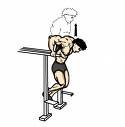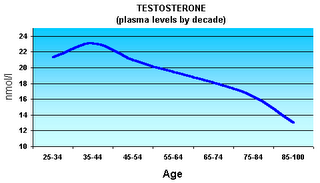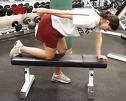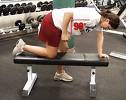
Whether you wrok out three hours per week, or 30, your diet is one of the most important factors that determine what you use for energy. Today's school of thought on high carbohydrate, low-fat diets is quickly changing, as people begin to realize that even after consistently working out they are not losing body fat.
Since most carbohydrates contain little or no fat, you may not think that carbohydrates can add to your fat stores. Yet, at least 40% of the carbohydrates you eat are stored as fat. Consuming too many carbohydrates -- even fat-free -- can actually make you fat. That's because of the way your body stores and uses the end product of the carbohydrates you consume.
Since most carbohydrates contain little or no fat, you may not think that carbohydrates can add to your fat stores. Yet, at least 40% of the carbohydrates you eat are stored as fat. Consuming too many carbohydrates -- even fat-free -- can actually make you fat. That's because of the way your body stores and uses the end product of the carbohydrates you consume.
Carbohydrates, whether they are in the form of pastas or chocolate cake, turn into glucose once they enter the bloodstream. Sugar is sugar -- the body doesn't discriminate. So if you consume excess amounts of carbohydrates, your blood sugar levels increase, triggering your pancreas to release insulin. Insulin controls where blood sugar is stored. Some is used for energy, and some is stored in the muscles as glycogen (the stored form of sugar).
Since your body can store only 2,000 calories as glycogen, the excess is stored as fat. Insulin also prevents existing fat from coming out of storage for use as energy. If you don't access your fat stores and burn body fat, you continually store the carbohydrates as FAT. The key is to use more stored body fat for energy; otherwise, you will burn more sugar and just store fat.
You can control what fuel your body burns through diet, If you eat predominately carbohydrates, your blood sugar may become unstable; and you will burn that readily available, although inefficient, fuel first because the presence of insulin inhibits fat mobilization for energy. This is why many people "hit the wall" at 20 miles in a marathon. They have run out of carbohdrates, not fat. If you avoid a high-carbohydrate diet and eat the proper balance of carbohydrates, proteins, and fats, your body will primarily burn stored body fat. All natural fats -- such as omega-6 (found in vegetables) and omega-3 (found in fish) -- are good for you as long as you consume them in moderation.
Since efficient body chemistry is difficult to measure, you should keep tabs on how you feel. Common symptoms of excess carbohydrates include sleepiness after eating, cravings for sweets, hunger within two hours of a high-carbohydrate meal, and the need to snack all day. When you don't burn enough body fat, you experience a dwindling of energy level.
A faster metabolism burns more fat, which provides you with more than twice the energy of carbohydrates. The more fat you access for energy, the more endurance you will develop and the leaner and faster you will become. If you cannot go for approximately four hours without eating at work or training, chances are you are eating too many carbohydrates.
































